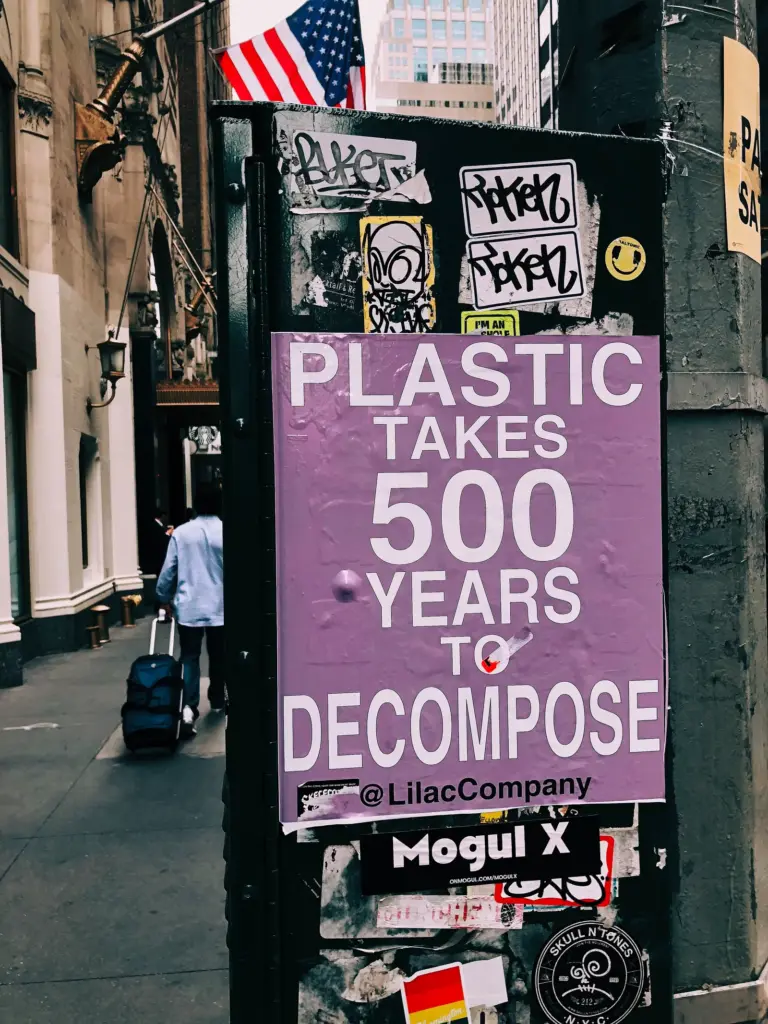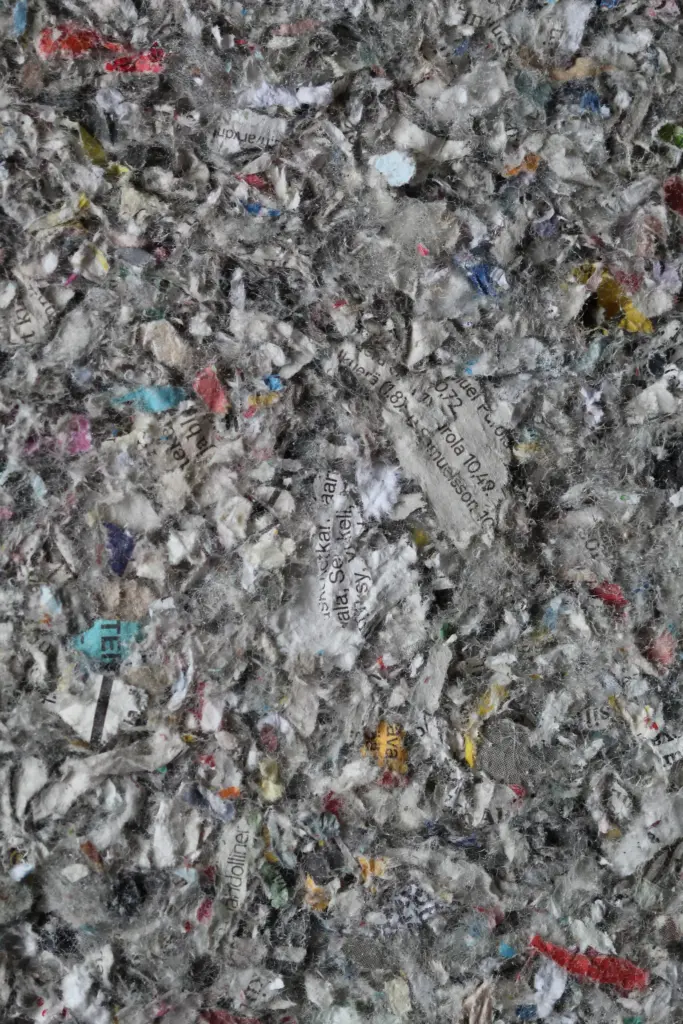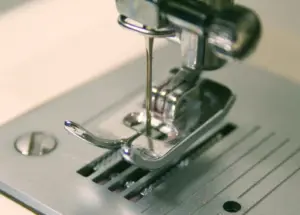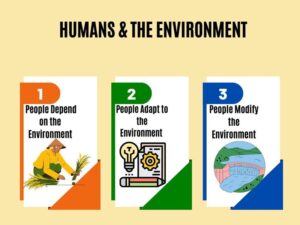“Biodegradable” is a material that can be broken down by natural processes into simpler substances, typically by the action of microorganisms like bacteria or fungi. This decomposition process results in the conversion of the product back into its base compounds, which can then be safely reabsorbed into the ecosystem.
For example, fruit peels, leaves, and wood are biodegradable because they can naturally decompose over time. Opposed to this, many synthetic materials, like plastics, are not biodegradable and can persist in the environment for hundreds of years without breaking down.
The term biodegradable is often used to describe products or packaging designed to break down naturally and reduce the environmental impact of waste. However, biodegradation conditions and time frames can vary widely depending on the material and environmental conditions.

Biodegradability of Paper
The biodegradability of paper is mainly due to its primary material: cellulose.
Cellulose is a complex carbohydrate found in the cell walls of plants, and it’s the substance that gives plants and trees their rigid structure. When paper is made, the cellulose fibers from the wood pulp constitute the structure of sheets of paper.
Cellulose can be broken down by microorganisms in the environment , such as bacteria and fungi. These organisms produce enzymes that break the bonds between the sugar molecules in cellulose, effectively digesting the cellulose and converting it into chemically simpler material.
The decomposition process can vary in length, depending on conditions like temperature, moisture, and the presence of these microorganisms.
How Long Does it Take to Decompose Paper?
The amount of time it takes to decompose can vary greatly depending on the type of paper and the environmental conditions. Paper typically decomposes within a few weeks to a few months in a compost pile or a landfill.
However, this process can be slower or faster depending on a variety of factors:
- Type of Paper: Thin tissues or newsprint will break faster than heavy cardboard or glossy magazine paper.
- Environmental Conditions: Decomposition is generally faster in warm, moist conditions with plenty of oxygen and microbial activity.
- Chemical Treatment: Paper heavily processed or treated with certain chemicals may take longer to decompose.
In general, paper is one of the quicker materials to decompose, especially compared to synthetic materials like plastic, which can take hundreds of years to degrade fully. However, even though the biodegradability of paper is an excellent quality, recycling is often a more environmentally friendly option when available, as it reduces the demand for new trees to be cut down for paper production.

How Can We Speed Up the Biodegradability of Paper?
There are several ways to speed up the biodegradation of paper:
- Composting: A compost pile’s heat and microbial activity can break down paper quickly. Shredding or tearing the paper into smaller pieces before adding it to your compost can further speed up this process, increasing the surface area for microbes.

- Moisture: Water helps the microorganisms that break down organic matter. Keeping paper wet can help speed up its decomposition.
- Aeration: Decomposition also requires oxygen; ensuring your compost pile is well-aerated helps speed up the process.
- Worms: Certain worms, such as red wigglers, can significantly speed up the decomposition of paper and other organic materials.
- Balance Carbon and Nitrogen: For effective composting, it’s important to balance carbon-rich materials (“browns”), such as paper or dry leaves, with nitrogen-rich materials (“greens”), like vegetable scraps or coffee grounds. A good rule of thumb is to use about 3 parts browns to 1 part greens.
- Avoid Coated or Treated Paper: Some types of paper are coated with plastic or treated with chemicals that can slow down their decomposition. Use untreated, uncoated paper if you want it to decompose quickly.
Is Paper Sustainable?
While paper is biodegradable, using paper products has environmental impact. Paper production involves cutting down trees, which can contribute to deforestation and often uses water and energy. Recycling paper, when possible, can help to mitigate some of these impacts.

The Supply Chain of Paper
The supply chain of paper is a complex process involving multiple stages, from harvesting raw materials to manufacturing the final product. Here’s a simplified overview:
- Forestry: This is the first step in the supply chain, where trees are grown and harvested. Sustainable forestry practices involve carefully managing these resources, such as planting new trees to replace those logged.
- Logging: Once trees are mature and ready to be harvested, logging operations cut down the trees and transport the logs to a mill. This can be done through various methods, such as clear-cutting or selective logging.
- Milling and Pulp Making: Logs are processed into wood chips at the mill. These chips are then cooked with chemicals in a digester, which separates the cellulose fibers from the rest of the wood material. The result is a substance called pulp.
- Bleaching and Washing: The pulp is then bleached to remove any remaining lignin, a wood component. The pulp is washed to remove the bleach and any leftover impurities.
- Paper Making: The clean pulp is mixed with water to form a slurry, then spread onto a wire mesh to create a sheet. This sheet is pressed and dried to form paper. The paper may then be coated or treated in various ways to achieve different characteristics, such as glossiness or increased durability.
- Distribution: Once the Paper is made, it’s cut into sheets or rolls and packaged for distribution. This can involve transportation to various locations, including retailers, offices, or directly to consumers.
- End Use and Recycling: Once the Paper reaches the end user, it can be used for various purposes. After its use, paper can often be recycled. In recycling, the paper is collected, sorted, and then processed back into pulp, which can be used to make new paper products.
Each of these steps in the paper supply chain has associated environmental impacts, including using natural resources, energy, and waste production.
What Chemicals Are Used to Produce Paper?
Paper production typically involves using various chemicals to break down the raw materials, remove impurities, and enhance the paper’s properties.
Here are some common chemicals used in the paper production process:
1) Pulping Chemicals: Pulping breaks down raw materials, such as wood fibers, into pulp. The two primary types of pulping methods are mechanical pulping and chemical pulping.
Chemical pulping involves using chemicals to remove lignin, a complex organic polymer that constitutes part of the wood. Some common pulping substances include:
- Sodium Hydroxide (NaOH)
- Sodium Sulfate (Na2SO4)
- Sodium Sulfite (Na2SO3)
2) Bleaching Agents: Bleaching is the step in paper production to remove colorants and brighten the pulp. Various chemicals are used as bleaching agents, including:
- Chlorine (Cl2): Although its use has been largely phased out due to environmental concerns, chlorine compounds were historically used for bleaching.
- Chlorine Dioxide (ClO2): A more environmentally friendly alternative to chlorine, chlorine dioxide is commonly used in bleaching.
- Hydrogen Peroxide (H2O2): Used to brighten pulp and remove impurities.
3) Sizing Agents: Sizing agents are added to paper to improve water absorption and ink penetration resistance. Common sizing agents include:
- Alkyl Ketene Dimer (AKD)
- Alkenyl Succinic Anhydride (ASA)
- Rosin: An older agent obtained from pine trees, rosin is a natural sizing agent sometimes used still in paper production
4) Additives: Various additives may enhance the paper’s properties, such as strength, smoothness, and printability. Some common additives include:
- Fillers (e.g., calcium carbonate): Used to improve paper smoothness and opacity.
- Retention aids: Chemicals that help retain fine particles and fibers in papermaking.
- Optical brightening agents: Used to enhance the paper’s brightness and whiteness.
Is Paper Recycling Bad for the Environment?
Energy Consumption: Recycling paper requires approximately 40% less energy than producing paper from fresh pulp. Recycling plants often rely on electricity from fossil fuels, which may be less environmentally friendly.
Pollution: Paper mills, which produce paper from fresh pulp, use toxic compounds such as toluene, methanol, and formaldehyde, making them significant polluters. In contrast, recycling paper causes 35% less water pollution and 74% less air pollution than producing new paper. Additionally, recycling a tonne of newspaper can prevent 3m³ of landfill space from being used.
Greenhouse Gas Emissions: Paper decomposes in landfills, producing methane, a potent greenhouse gas. Recycling Paper can reduce methane emissions from paper decomposition, contributing to mitigating climate change.
How Many Times Can Paper Be Recycled?
While paper can be recycled multiple times, the number of recycling cycles depends on the paper grade, fiber quality, and the specific recycling process. High-quality office paper can typically be recycled around five to seven times, while lower-grade papers may have a shorter recycling life. Eventually, the recycled paper may undergo downcycling or require the addition of virgin fiber to maintain its quality.
Conclusions
“Biodegradable” describes a material’s capability to be broken down into simpler substances by natural processes, typically facilitated by microorganisms. Paper’s decomposition timeline can vary depending on several factors, such as the type of paper, environmental conditions, and the presence of certain chemicals.
There are ways to accelerate the biodegradation of paper, such as composting, maintaining moisture levels, aerating compost piles, introducing specific worms, balancing carbon and nitrogen, and avoiding coated or treated paper. These strategies can contribute significantly to minimizing the environmental footprint of paper waste.
However, despite its biodegradable nature, paper production and use is not devoid of environmental impacts. From deforestation to significant water and energy usage during production, the paper industry has a marked ecological footprint.
Paper production also involves several chemicals, from pulping substances to bleaching agents, sizing agents, and various additives. These substances can have their environmental implications.
One way to mitigate the environmental impact of paper usage is through recycling. Paper recycling is less energy-intensive and polluting than producing new paper, and it helps reduce greenhouse gas emissions. While the recyclability of paper varies with its grade and fiber quality, high-quality office paper can be recycled up to five to seven times, reducing the demand for fresh pulp.
While being aware of biodegradability is essential, it’s also crucial to remember the significance of reducing consumption, reusing where possible, and recycling diligently.
Please share your thoughts, experiences, or questions in the comments section below. Sharing knowledge and experiences can contribute to better collective understanding and action toward sustainable practices.
If you found this article helpful, consider sharing it on your social media platforms to raise awareness about biodegradability, the environmental implications of paper usage, and the importance of responsible consumption and recycling practices.



